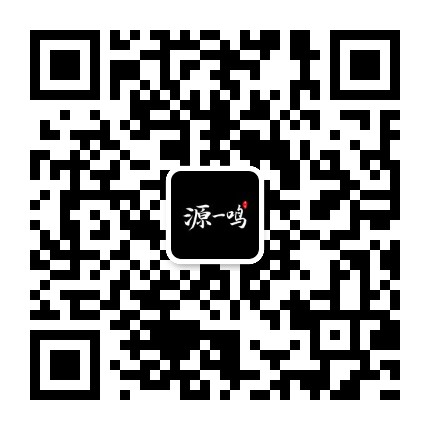一、用法
一个名词(或其它形式)对另一个名词或代词进行修饰,限定或说明,这个名词(或其它形式)就是同位语。同位语与被它限定的词的格式要一致,并常常紧挨在一起。同位语从句即重复说明同一个称谓或事件的从句。
1、名词作同位语
Mr Wang, my child’s teacher,will be visiting us on Tuesday.
王先生,我孩子的老师,星期二要来看我们。
(在这里my childs teacher做同位语修饰Mr Wang)
2、短语作同位语
I, the oldest girl in the family, always had to care for the other children.
我,作为家里最大的女孩,总是要照料家中的其他孩子。
3、直接引语作同位语
But now the question comes to their minds,“Did she die young because she was a clone?”
但是现在他们不得不思考这样的问题:“多莉早死是因为它是一只克隆羊吗?”
4、句子作同位语
The girls were surprised at the fact that ocean ships can sail up the Great lakes.
巨大的海轮可以开到五大湖,让表姐妹俩感到吃惊。
二、固定用法
同位语部分是个句子,就是同位语从句,这种用法比较”固定”。
1、在复合句中用作同位语的从句叫同位语从句。它一般跟在某些名词后面,用以说明该名词表示的具体内容。
I heard the news that our team had won.
我听到了我们队获胜的消息。
2、可以跟同位语从句的名词通常有news,idea,fact,promise,question,doubt,thought,hope,message,suggestion,words(消息),possibility,decision等(一般的“抽象”名词都可用)。
I’ve come from Mr wang with a message that he won’t be able to see you this afternoon.
我从王先生那里来,他让我告诉你他今天下午不能来看你了。
3、英语中引导同位语从句的词通常有连词that,whether,连接代词what,who。连接副词how,when,where等。(注:if不能引导同位语从句。)
He must answer the question whether he agrees with it or not.他必须回答他是否同意这样一个问题。
4、有时同位语从句可以不紧跟在说明的名词后面,而被别的词隔开。
The thought came to him that maybe the enemy had fled the city.
他突然想起敌人可能已经逃出城了。
三、引导词
同位语从句的引导词,引导同位语从句的词语通常有连词that,whether,连接代词和连接副词等。
1、that引导
that连接从句时从句为一个句意完整的陈述句。that不能省略,没有具体的意思,不充当句子成分,只起连接作用。
(注:引导同位语从句的that不能省略)
The idea that you can do this work well without thinking is quite wrong.
你认为不动脑筋就能做好这件工作的想法是完全错误的。(作idea的同位语)
【注意1】在某些名词(如demand, wish, suggestion, resolution等)后面的同位语从句要用虚拟语气There was a suggestion that Brown should be dropped from the team.有一项建议是布朗应该离队。
【注意2】引导同位语从句的连词that通常不省略,但在非正式文体中也可以省去。
He grabbed his suitcase and gave the impression he was boarding the Tokyo plane.
他拿起了手提箱,给人的印象是他要登上飞往东京的飞机了。
2、whether引导
(注:if不能引导同位语从句)
The question whether we should call in a specialist was answered by the family doctor.
我们是否请专家由家庭医生来定。
【注意】whether 可引导同位语从句,但if不能引导同位语从句。
3、连接代词what,who,whom,whose引导
1).I have no idea what size shoes she wears.
我不知道她穿几号的鞋。(what作定语)
2).The question who will take his place is still not clear. (who作主语)
4、连接副词when,where,how,why引导
We haven’t yet settled the question where we are going to spend our summer vacation.
到哪儿去度暑假,这个问题我们还没有决定。
四、同位语从句与定语从句的区别
1、意义的不同
同位语从句是用来进一步解释或补充说明前面的名词,它与被修饰词语通常可以划等号;
而定语从句是限制所修饰名词的,它的作用是将所修饰的名词与其他类似的东西区别开来。
We are glad at the news that he will come.
听到他要来这个消息我们很高兴。
(news的具体内容就是that he will come,故that引导的是同位语从句)
We are glad at the news that he told us.
听到他告诉我们的这个消息我们很高兴。
(that从句是限制the news的内容的,即我们高兴只是因为他告诉的这个news而不是其他的news,故that从句为定语从句)
2、引导词的不同
what, how, if, whatever 等可引导名词性从句,但不引导定语从句。
3、引导词的功能上的不同
that引导同位语从句时,它不充当句子成分,而引导定语从句时,它作为关系代词,要么充当定语从句的主语,要么充当定语从句的宾语。如上例 that he told us中的that就充当told的宾语。
4、被修饰词语的区别
同位语从句所修饰的名词比较有限,通常有hope, wish, idea, news, fact, promise, opinion, suggestion, truth等,而定语从句所修饰的名词则非常广泛。
另外,when和where 引导定语从句时,通常只修饰表示时间和地点的名词,而它们引导同位语从句时却不一定;又如why引导定语从句,它通常只修饰名词the reason,而它引导同位语从句时则不一定。
I have no idea when they will come.
我不知道他们什么时候来。(同位语从句)
I’ll never forget the days when I lived there.
我永远不会忘记我住在那儿的日子。(定语从句)
We don’t understand the problem why this is the best choice.
我们不明白这个问题,为什么这是最好的选择。
(同位语从句 )
The reason why he didn’t come to the meeting is that he is ill.
他未能来开会,原因是他生病了。
(定语从句)
















